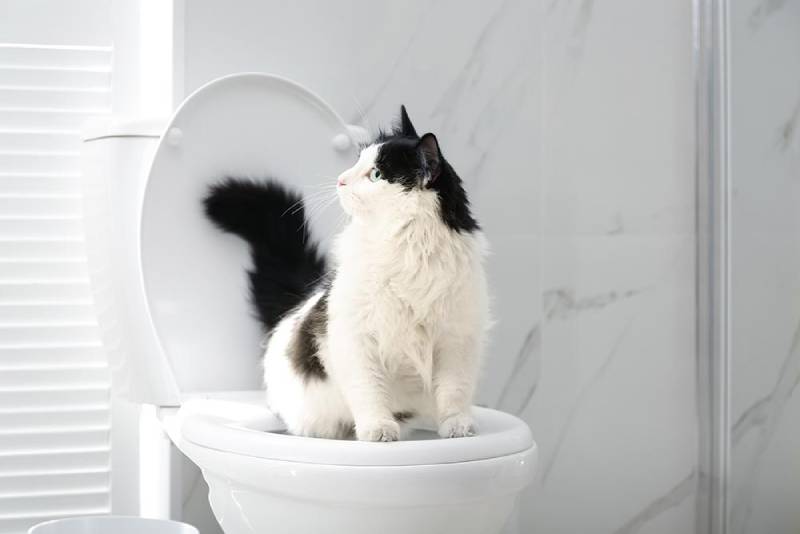Why Flushing Cat Poop Down Your Toilet May Cause Problems - Recommendations for Proper Handling
Why Flushing Cat Poop Down Your Toilet May Cause Problems - Recommendations for Proper Handling
Blog Article
Just how do you really feel in relation to Can You Flush Cat Poop Down The Toilet??

Introduction
As cat owners, it's vital to be mindful of how we take care of our feline good friends' waste. While it may seem practical to flush cat poop down the commode, this practice can have detrimental consequences for both the environment and human health and wellness.
Alternatives to Flushing
Fortunately, there are safer and extra responsible ways to get rid of feline poop. Think about the adhering to options:
1. Scoop and Dispose in Trash
One of the most common method of getting rid of feline poop is to scoop it into an eco-friendly bag and toss it in the trash. Make certain to utilize a specialized trash inside story and take care of the waste quickly.
2. Use Biodegradable Litter
Choose eco-friendly pet cat litter made from materials such as corn or wheat. These trashes are eco-friendly and can be safely gotten rid of in the garbage.
3. Hide in the Yard
If you have a backyard, think about hiding feline waste in a designated area far from vegetable yards and water resources. Be sure to dig deep adequate to prevent contamination of groundwater.
4. Mount a Pet Waste Disposal System
Invest in a pet dog waste disposal system specifically designed for cat waste. These systems use enzymes to break down the waste, decreasing odor and environmental influence.
Wellness Risks
Along with environmental issues, flushing pet cat waste can additionally present health and wellness risks to human beings. Feline feces may have Toxoplasma gondii, a parasite that can cause toxoplasmosis-- a possibly severe ailment, especially for expecting ladies and individuals with weakened body immune systems.
Ecological Impact
Flushing pet cat poop presents dangerous microorganisms and bloodsuckers into the supply of water, posing a substantial threat to water ecological communities. These contaminants can adversely influence aquatic life and compromise water quality.
Conclusion
Liable animal possession expands beyond offering food and sanctuary-- it additionally entails correct waste management. By avoiding flushing feline poop down the bathroom and opting for different disposal techniques, we can decrease our environmental footprint and protect human wellness.
Why Can’t I Flush Cat Poop?
It Spreads a Parasite
Cats are frequently infected with a parasite called toxoplasma gondii. The parasite causes an infection called toxoplasmosis. It is usually harmless to cats. The parasite only uses cat poop as a host for its eggs. Otherwise, the cat’s immune system usually keeps the infection at low enough levels to maintain its own health. But it does not stop the develop of eggs. These eggs are tiny and surprisingly tough. They may survive for a year before they begin to grow. But that’s the problem.
Our wastewater system is not designed to deal with toxoplasmosis eggs. Instead, most eggs will flush from your toilet into sewers and wastewater management plants. After the sewage is treated for many other harmful things in it, it is typically released into local rivers, lakes, or oceans. Here, the toxoplasmosis eggs can find new hosts, including starfish, crabs, otters, and many other wildlife. For many, this is a significant risk to their health. Toxoplasmosis can also end up infecting water sources that are important for agriculture, which means our deer, pigs, and sheep can get infected too.
Is There Risk to Humans?
There can be a risk to human life from flushing cat poop down the toilet. If you do so, the parasites from your cat’s poop can end up in shellfish, game animals, or livestock. If this meat is then served raw or undercooked, the people who eat it can get sick.
In fact, according to the CDC, 40 million people in the United States are infected with toxoplasma gondii. They get it from exposure to infected seafood, or from some kind of cat poop contamination, like drinking from a stream that is contaminated or touching anything that has come into contact with cat poop. That includes just cleaning a cat litter box.
Most people who get infected with these parasites will not develop any symptoms. However, for pregnant women or for those with compromised immune systems, the parasite can cause severe health problems.
How to Handle Cat Poop
The best way to handle cat poop is actually to clean the box more often. The eggs that the parasite sheds will not become active until one to five days after the cat poops. That means that if you clean daily, you’re much less likely to come into direct contact with infectious eggs.
That said, always dispose of cat poop in the garbage and not down the toilet. Wash your hands before and after you clean the litter box, and bring the bag of poop right outside to your garbage bins.
https://trenchlesssolutionsusa.com/why-cant-i-flush-cat-poop/

As a fervent person who reads on Can You Flush Cat Poo or Litter Down the Toilet?, I was thinking sharing that piece was a good thing. Sharing is caring. You never know, you may be helping someone out. Many thanks for your time. Visit again soon.
Book Service Now Report this page